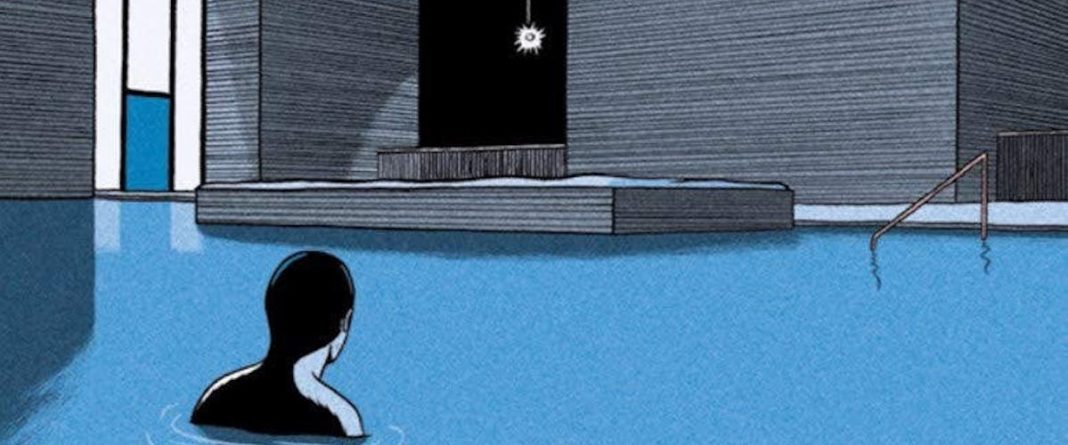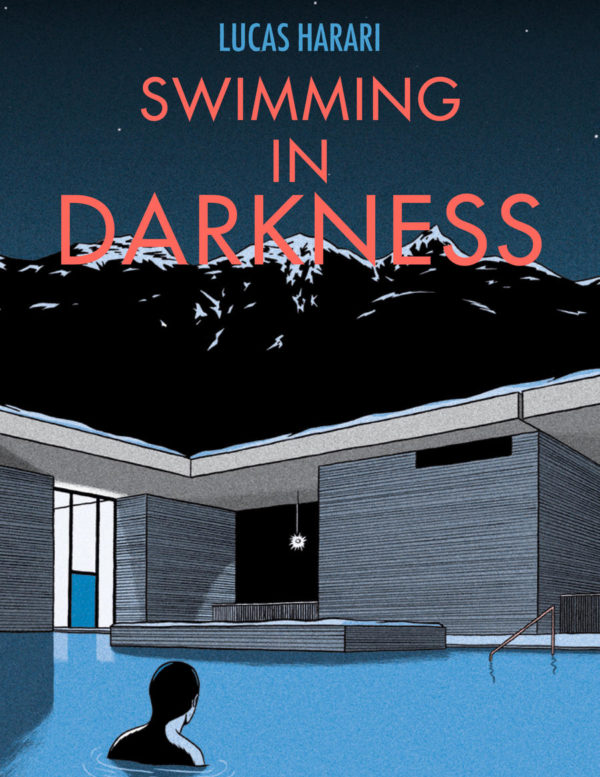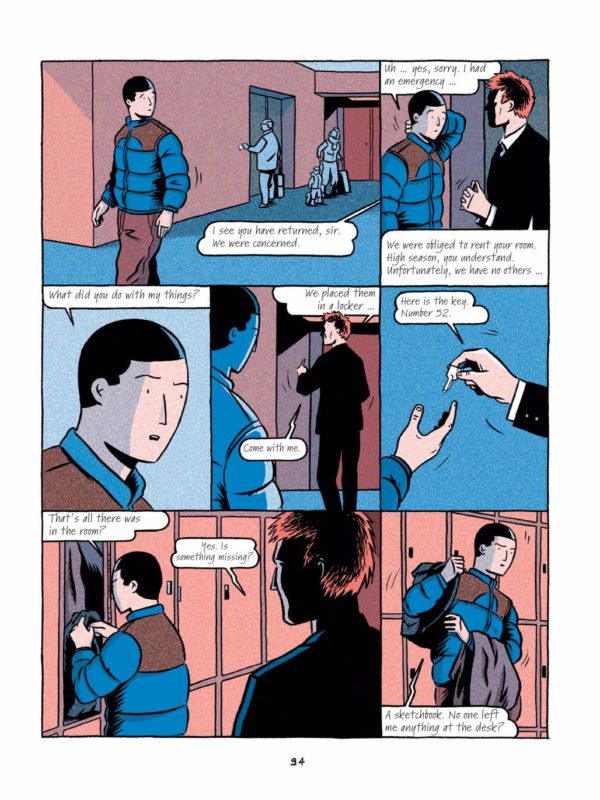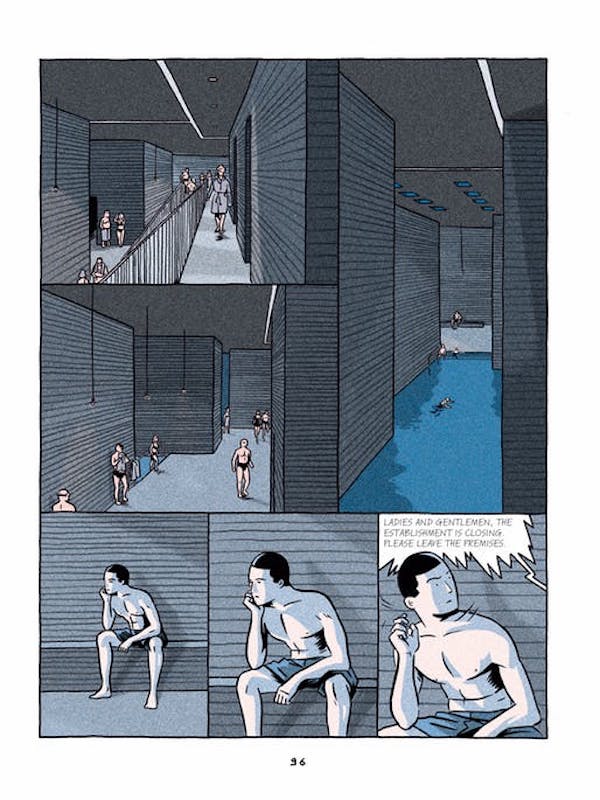Swimming In Darkness
By Lucas Harari
Translated by David Homel
Arsenal Pulp Press
There is an area in Vermont close to where I live that has been referred to as the Bennington Triangle. I wouldn’t say that it’s the center of numerous documented paranormal happenings, though it is one of those places where there are a lot of unofficial whisperings about more happening there than is actually spoken of. The real impetus for the epitaph is a few fairly high profile disappearances centered around Glastenbury Mountain, where there used to be a town called Glastenbury, but it is long gone, with only some scarce traces in the woods remaining. There’s also a stone cairn at the top of the mountain and no one knows where it came from.
The reason I bring this up is that these are the ingredients from which legends grow, and though the Bennington Triangle hasn’t ever exactly taken off in popular imagination, it’s been fascinating to be in its proximity and see it brought up now and again, each new iteration pushing it further and further into the realm of accepted paranormal reality, and more distant from the excitement of campfire legend-building.
One of the most highly-anticipated graphic novels this year, Lucas Harari’s Swimming in Darkness uses the location of the real thermal baths in Vals, Switzerland, called Therme Vals and housed in a mysterious structure designed by the equally mysterious architect Peter Zumthor, to investigate these same ideas. In narrative form, Harari incorporates local legend with the history of architecture, particularly the idea of secret rooms, and wraps these all around Zumthor’s conundrum of a structure and the stylistic forms of noir, though without seeking to suck out the mysterious qualities of all these components.
Pierre is a troubled ex-architecture student whose Ph. D thesis was about Therme Vals before it was destroyed. Years later, he decides to visit the baths and come to terms with the way it haunts his soul. But his journey there brings hints of intrigue as if there is something more going on than his own personal venture, possibly related to the surprise appearance in there by a renowned expert in the architectural field of baths, whose hot and cold behavior toward Pierre is confusing for him.
But there’s also interaction with the locals, most notably the town hermit Testin, who has lived as an outlier there since he witnessed a strange event in the mountains involving a visitor in the town who would disappear and phenomena that sits as unexplainable and largely dismissed by the other locals. Testin also charges that the catacombs of the baths lead somewhere, and this idea compels Pierre to delve further into his obsession and find answers, unsure of what kind of answers he is actually looking for or what they could possibly mean even if he found them.
In Swimming In Darkness, Harari captures the atmosphere of the real baths chillingly — go take a look at these photos from Portuguese photographer Fernando Guerra as a comparison. Harari’s rendering of Zumthor’s structure is monolithic, like a quiet god watching the world, but the inside passageways are the very thing that has ignited human imagination for centuries. History is filled with passages and tunnels that are obscured from plain sight, systems like the scores of secret caves in Nottingham or the Hypogeum underneath the Colosseum or the New York subways or the sewers of Paris or the lava shoots in Iceland. These places capture human imagination and we put them in our stories. We see them in nature and we build them ourselves, and Harari seems to understand their importance in our collective unconscious and know how to visually evoke that unspeakable allure.
In this way, Pierre’s journey in Swimming In Darkness is one of discovery about human culture and imagination as it is shared through the ages. What does it mean that the things that fascinate us resonate through our history and manifests itself in our stories, in our physical creations, even sometimes in our belief systems? Why are certain concepts and situations so compelling that they echo through time, and are revisited individually in our own personal obsessions and creative concoctions again and again and again? And what do we expect to find when we venture into the unknown, whether it’s across the American wilderness or up into the Arctic or down into some hole in the ground?
These are all abstract ideas for which there really aren’t any answers, but just as such factors exist that we become consumed with them over generations, part of that is the compulsion to investigate itself through our artwork as much as it is to uncover any conclusions about what the focus of the compulsion is trying to tell us. Perhaps humans are just very good at fabricating things to keep us going through the ages, keep our minds alive and moving forward, keep us interested. Maybe that’s all it is. That’s okay. Harari’s contribution to this human tradition is a particularly strong one and compelling on its own and as part of something larger. Swimming In Darkness presents mysteries on all these levels that are inviting and comforting. It reminds us that there is a thrill to being human even still.










